An angler’s oasis on Florida’s “Forgotten Coast,” Cape San Blas straddles the edge of the peninsula between Port St. Joe and Apalachicola. While some call it a gem that’s yet to be discovered, one thing’s for sure, fishing in Cape San Blas is world-class.
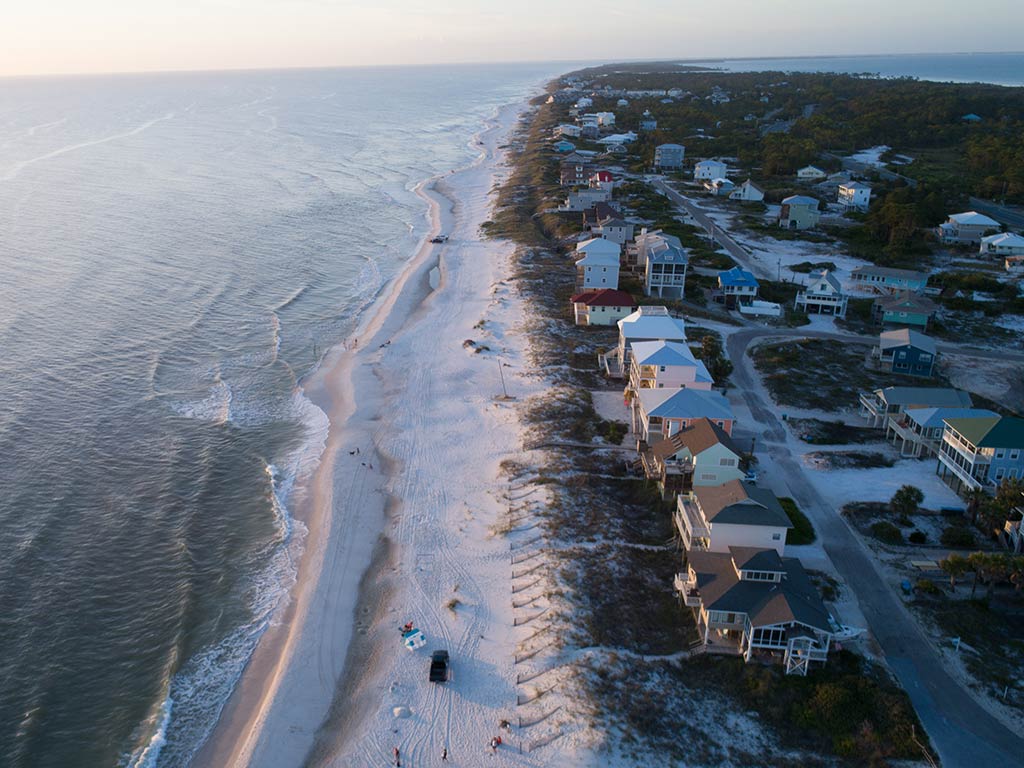
Anglers from all over the country come here to enjoy everything its fertile waters have to offer. The joy of Cape San Blas fishing lies beneath the surface, with healthy populations of anything from Tarpon to Redfish and Snook, just to name a few. Plus, the views are pretty amazing, too.
In this guide, you’ll learn everything you need to know about the fishing spots, species to catch, effective techniques to try, and the best times to fish. If you’re ready, let’s dive right in.
What can I catch while fishing in Cape San Blas?
First of all, Cape San Blas is all about diversity. You can enjoy the inshore shallows or deep offshore waters. Both have a myriad of game fish ready to challenge your skills. The area’s bay is home to the crème de la crème of inshore, from Redfish and Flounder to Speckled Trout and Tripletail.
Move further away, and you’ll fish the passes that connect the inshore waters to the Gulf of Mexico. Here, you can land Spanish Mackerel, Pompano, Cobia, and Kingfish.
Then, for a quick taste of Florida’s big game, you can check the bite in the Gulf itself. What’s on offer on a Cape Blass deep sea fishing trip? Anything from Mahi Mahi to Amberjack, Snapper, and Grouper.
Redfish and Speckled Trout
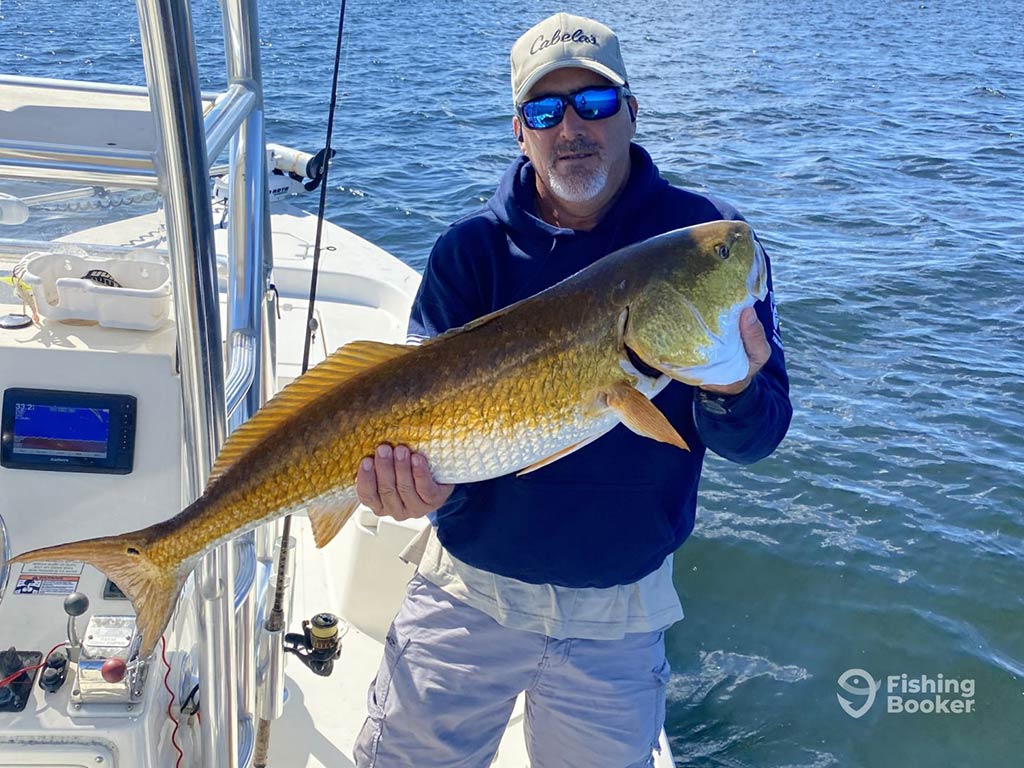
When it comes to the best inshore catches in Cape San Blas, Redfish and Speckled Trout stand out as the crown jewels. These sought-after species promise a thrilling tug on your line, challenging both novice and seasoned anglers like no other inshore species. Their pursuit can become addictive, which a lot of locals can easily confirm,
Hotspots for these two favorites lie in the lush grass flats of St. Joseph Bay and the tranquil shallows around the Cape. When it comes to planning your trip for these inshore stars, fall and spring are the best time. These seasons bring moderate water temperatures and an abundance of bait fish, creating a fisherman’s paradise in the bays of Cape San Blas.
Flounder and Tripletail
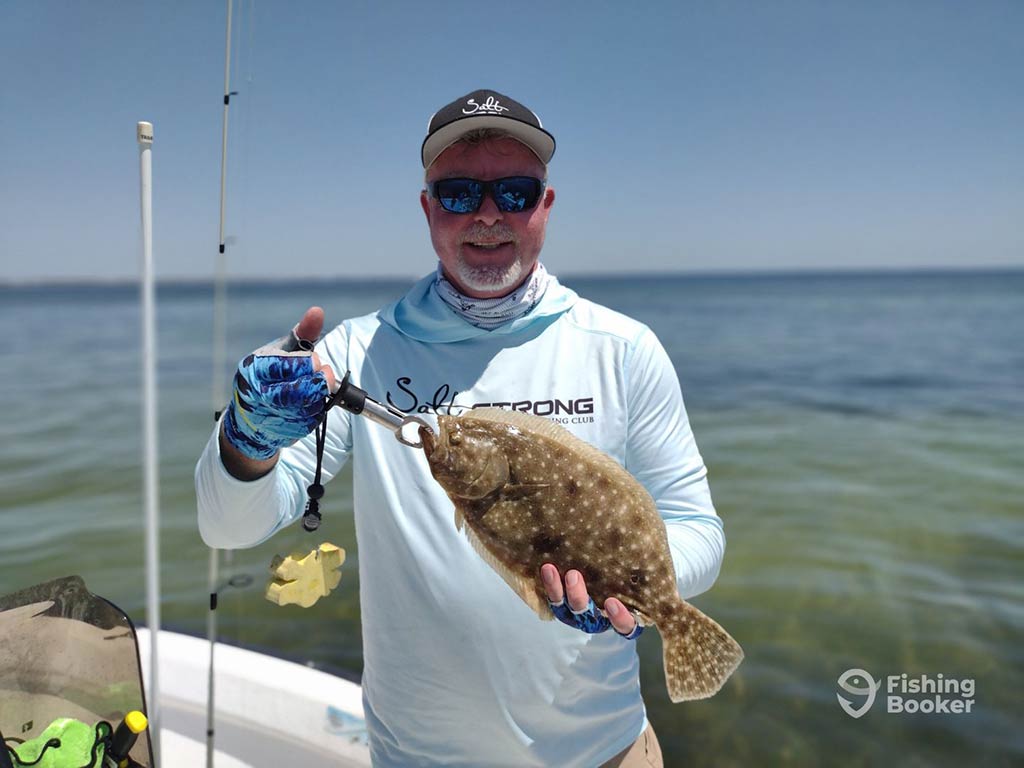
Flounder and Tripletail are two other charming inshore species, adding a bit of diversity to Cape San Blas’s rich fishery. Known as ambush predators, their sneaky tactics and sudden strikes promise an exciting challenge to any angler.
The prime fishing spots for these fish are scattered oyster beds, docks, and other shoreline pockets filled with various types of structure. Here, Flounder and Tripletail lie waiting, ready to attack unsuspecting prey and setting the stage for you to cast your line.
When it comes to seasonality, the fall season is your best bet for Flounder, as these Flatfish become particularly active. Tripletail, on the other hand, prefer the warm months of spring and summer.
King Mackerel and Cobia

When the allure of offshore fishing calls, King Mackerel – also known as Kingfish – and Cobia answer. These pelagic species roam the depths of Cape San Blas, turning each fishing trip into a chase you won’t forget. And, if you manage to land one of them, you’ll get all the bragging rights, of course.
Artificial reefs, shipwrecks, and the edges of the Gulf Stream are the hotspots for these deep-sea dwellers. These areas provide the perfect underwater playground for Kingfish and Cobia, attracting them in large numbers. If you know where and when to look, that is.
Time your offshore expedition for Kingfish during the summer months, when these species are in their prime. Meanwhile, spring and early summer mark the migration period for Cobia. This creates a fishing frenzy in the offshore waters of Cape San Blas.
Mahi Mahi and Amberjack
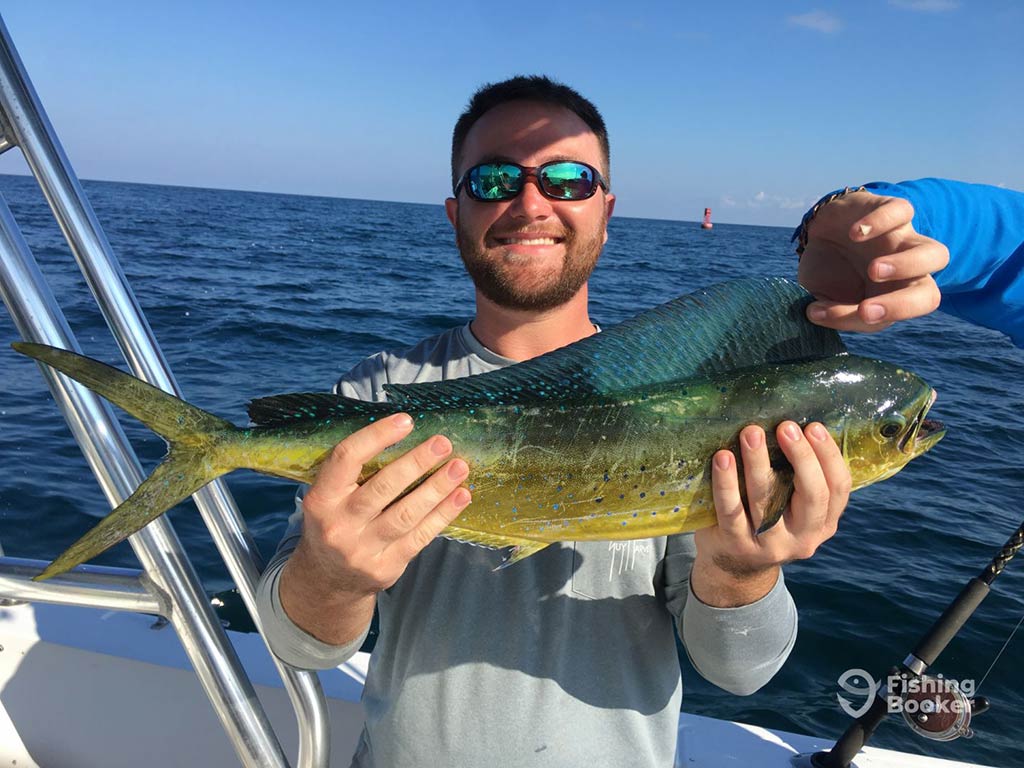
Two more offshore superstars, Mahi Mahi and Amberjack, add to the excitement of Cape San Blas’s fishing scene. Mahi Mahi’s dazzling colors and Amberjack’s hard-fighting reputation make anglers of all skill levels chase them when the conditions allow.
Search for Mahi Mahi around floating debris and weed lines – their preferred playgrounds. Amberjack, on the other hand, love the complexity of deep-water wrecks and structures, where they often lurk. It’s never a bad idea to have a professional guide by your side to take you to the honey holes.
Both Mahi Mahi and Amberjack are summertime celebrities, showing up in great numbers during this season. Prepare for some serious reel-screaming action when you target these species in the Cape San Blas summer.
Snapper and Grouper
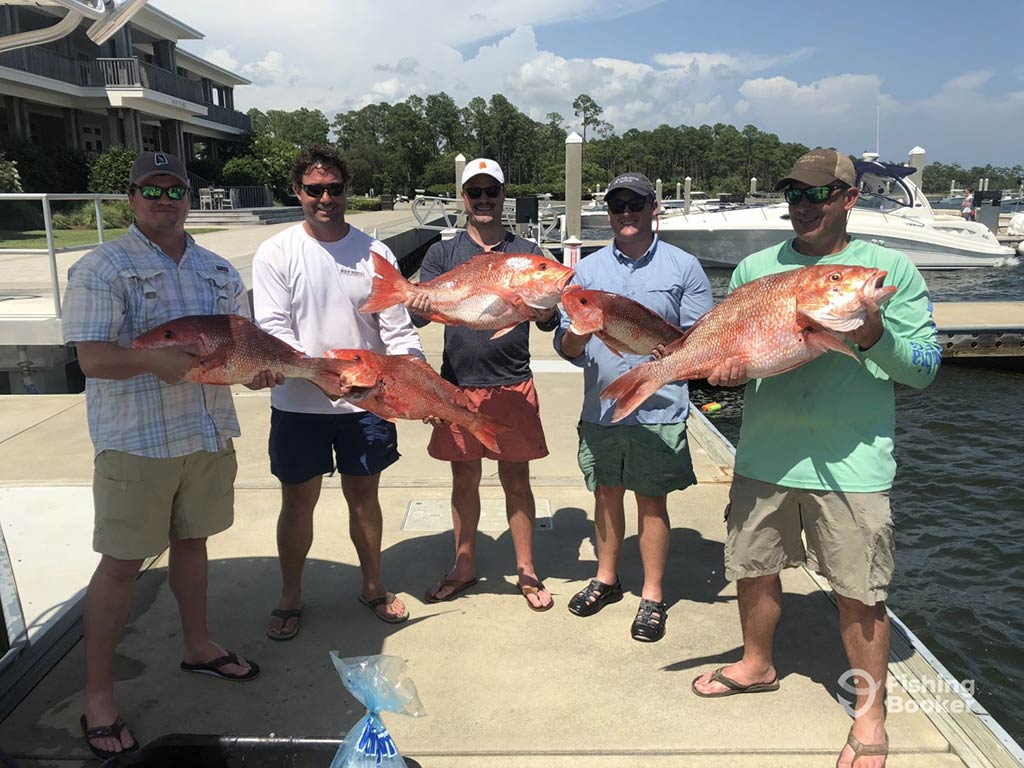
For fans of bottom fishing, Cape San Blas doesn’t disappoint. That’s thanks to Snapper and Grouper. These include the world-renowned Red Snapper and the delicate Vermilion Snapper, along with Gag and Red Grouper.
Prime locations to find these species are the reefs, wrecks, and ledges in the deeper offshore waters. These species dwell and thrive, here, adding an extra level of excitement to every drop of your line.
While Snapper and Grouper can be hooked year-round, local regulations might affect their availability. Always check the latest rules before you embark on your angling adventure to keep the experience sustainable and, of course, enjoyable.
Sharks
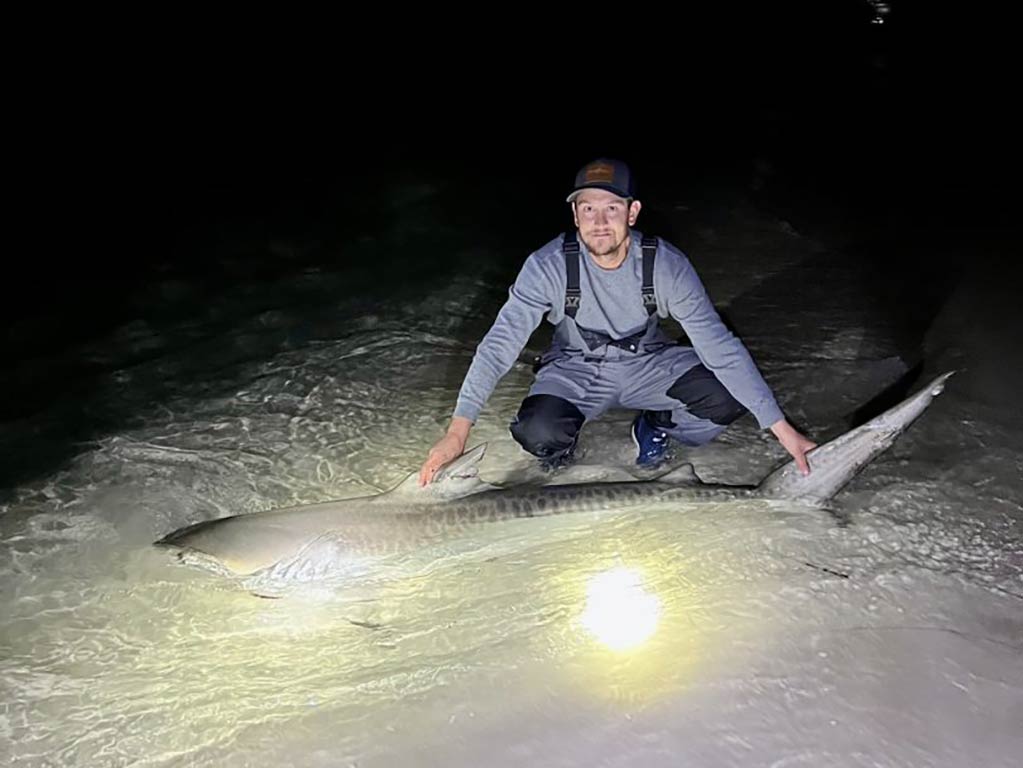
Adding a thrill to any angling adventure in Cape San Blas are the impressive Sharks that patrol these waters. Species you can encounter include Bull, Blacktip, and even the occasional Hammerhead. Fishing for these giants stands out due to the sheer adrenaline rush that it offers. Nothing quite matches the sensation of having a Shark on the end of your line. While typical catches usually range between 4–6 feet, record catches have seen Bull Sharks exceeding 11 feet.
Sharks are around year-round, but are especially active during the summer months when they come closer to shore in search of food. Depending on which species you’re after, you can find them both inshore and off the coast.
Prime spots for Shark fishing in Cape San Blas include the deep channels near the Indian Pass and around the outer edges of St. Joseph Bay. Heavy tackle, patience, and a good bit of courage can help you reel in these awesome fighters!
When to Go Fishing in Cape San Blas
It’s no surprise that Cape San Blas has a lot to offer anglers visiting any time of the year. But the best time to cast your line depends on what you’re targeting and the overall fishing conditions, of course.

The general fishing season kicks off in spring when the waters begin to warm up. The inshore grounds come alive with Redfish, Speckled Trout, and Tripletail in St. Joseph Bay. There’s also migrating Cobia in the offshore waters and Bluefish and Spanish Mackerel along the beaches.
Many anglers prefer to fish during the summer months, as the warm waters bring an abundance of potential catches. Mahi Mahi, Amberjack, and Kingish actively bite offshore, while Snapper and Grouper can be found on the reefs and wrecks. If that’s not enough, you can hook into Reds and Speckled Trout in the bay and enjoy the annual Tarpon migration.
Fall is all about inshore fishing in Cape San Blas, with a lot of Redfish, Speckled Trout, and Flounder. However, you can still enjoy some action on the reefs and offshore, where Kingfish remain active.
The fishing doesn’t slow down in winter either. You can enjoy some light tackle action for Sheepshead and Black Drum or head just a few miles out for some Triggerfish.
Where can I go fishing in Cape San Blas?
Cape San Blas fishing charters head out of multiple ports along the Forgotten Coast. From Mexico Beach and Port St. Joe to Apalachicola and the Cape itself, there’s plenty to choose from. The best location to begin your search for a perfect charter depends on the type of experience you’re looking for.
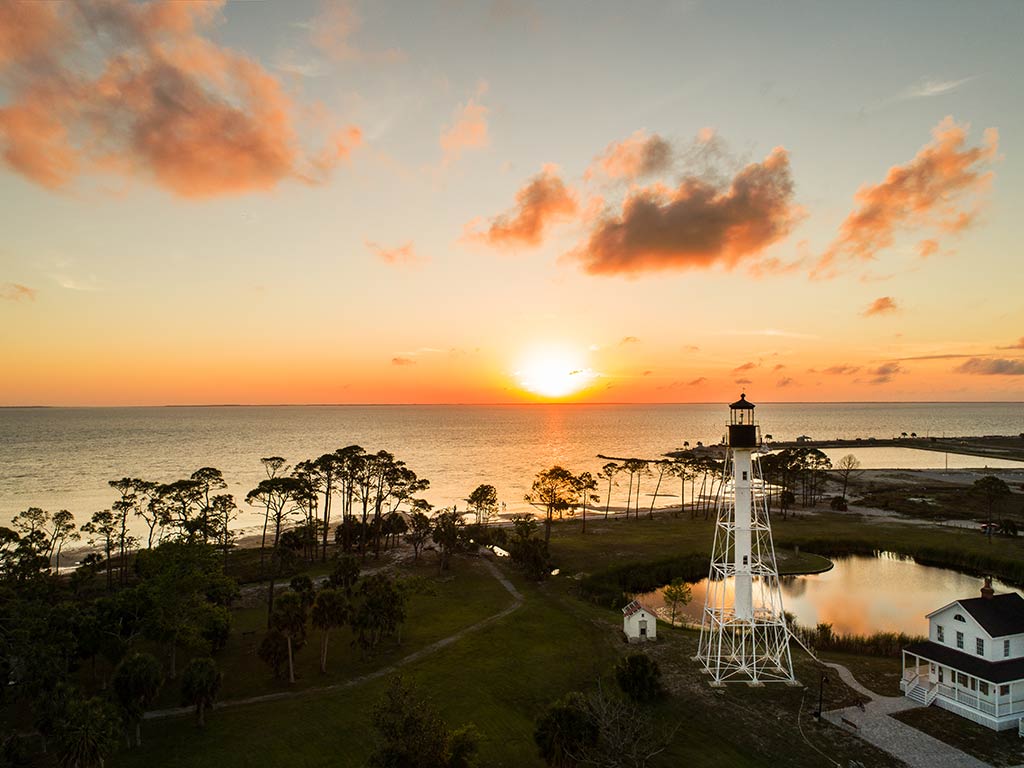
Cape San Blas offers a wealth of fishing opportunities for anglers of all skill levels. Whether you prefer to cast a line from the shore, venture into the shallow inshore waters, or head out into the deep blue sea, you’ll find the perfect spot for your fishing adventure. Below, we’ll highlight some of the best fishing locations in Cape San Blas to help you plan your next angling excursion.
- St. Joseph Bay. St. Joseph Bay is an inshore fishing haven known for its clear, shallow waters and lush seagrass beds. This area is ideal for targeting Redfish, Speckled Trout, Flounder, and Tripletail. You can access the bay by kayak, small boat, or wade fishing along the shoreline.
- Cape San Blas Lighthouse. The area surrounding the Cape San Blas Lighthouse offers excellent surf fishing opportunities. Cast your line from the beach to target Pompano, Whiting, and Redfish. Or wade out a bit further to target Speckled Trout.
- Indian Pass. Located just west of Cape San Blas, the Indian Pass connects St. Vincent Sound and the Gulf of Mexico. This spot offers excellent inshore fishing for Redfish, Speckled Trout, and Flounder, as well as easy access to offshore fishing grounds for Kingfish, Cobia, and more.
- Salinas Park. Salinas Park offers fishing access to both the Gulf of Mexico and St. Joseph Bay. Here you can cast a line from the beach, try your luck at the park’s fishing pier, or launch a kayak or small boat to explore the bay’s grass flats.
- Offshore reefs and wrecks. Cape San Blas is home to numerous artificial reefs and shipwrecks that provide an excellent habitat for a variety of fish species. These locations are perfect for targeting Snapper, Grouper, Amberjack, and other offshore species. Charter a boat or head out on your own to explore these productive fishing grounds.
How can I go fishing in Cape San Blas?
The calm inshore waters and the deep offshore grounds of Cape San Blas allow you to experiment with various techniques. However, even the most experienced angler can benefit from a trip with a local guide. If you book a local fishing charter, you won’t need to worry about gearing up or picking the right spot – your captain will take care of everything.
However, it’s never a bad idea to know what to expect, so let’s dive into the local fishing tactics:
Surf Fishing in Cape San Blas

Surf fishing in Cape San Blas is a joy to behold. The area’s vast sandy shoreline, especially near the Cape San Blas Lighthouse and Salinas Park, has a lot of good spots to cast your line for Redfish and even Sharks.
Using a 10–12′ rod provides better casting distance, helping you reach the deeper waters. Pair this with a spinning reel loaded with a 15–20 lb test line for most species. Of course, you may need a heavier line for bigger species, like Sharks. However, whatever target you have in mind, aim to time your surf fishing around the rising and falling tides. And don’t forget about a valid fishing license!
Pier Fishing in Cape San Blas
Pier fishing in Cape San Blas offers the ideal backdrop for your fishing excursion, especially if you don\t want to hop on a boat. There are a couple of nice fishing structures along the St. Joe Peninsula and Cape San Blas coasts that you can check out.
When fishing from a pier, a versatile 7–9‘ rod paired with a durable spinning reel is a standard choice. Depending on the species, a 10–20 lb test line works well for most situations. Pack a Carolina or dropper rig, or opt for live and cut bait, such as small bait fish, shrimp, and squid.
Inshore Fishing
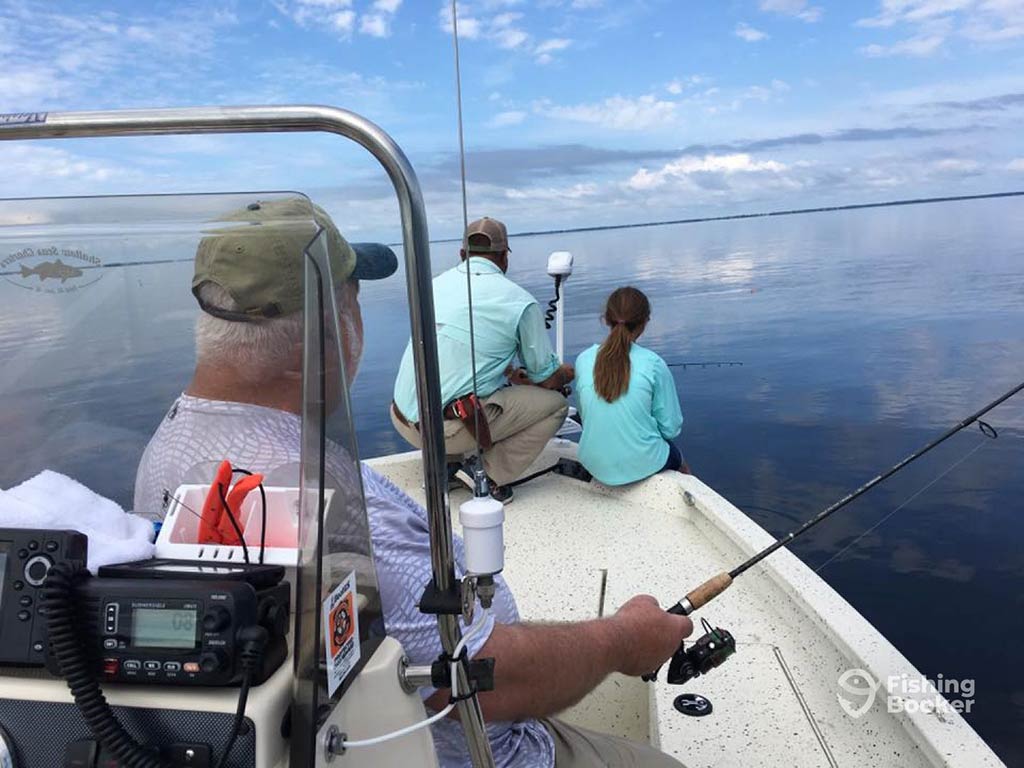
For inshore fishing in Cape San Blas, you’ll want a versatile setup that can handle a variety of species like Redfish, Speckled Trout, and Flounder. A medium-light to medium action spinning rod in the 7–8′ range, paired with a 2500–3000 reel spooled with a 10–15 lb braided line will provide you with the sensitivity and power needed for these beauties. A fluorocarbon leader in the 15–20 lb range will ensure stealthy presentations. Equip yourself with a selection of live baits like shrimp, finger mullet, and mud minnows, as well as artificial lures like soft plastics, jigs, and spoons.
However, Tarpon and Cobia require a heavier setup. We’re talking a medium-heavy action spinning or casting rod in the 7–8′ range, paired with a 5000–6000 reel spooled with a 30–50 lb braided line. A strong monofilament or fluorocarbon leader is essential for these fish. As for live bait, consider packing lures like poppers or swimbaits, or live bait, such as mullet or pinfish.
Deep Sea Fishing in Cape San Blas
Deep sea fishing in Cape San Blas is mostly divided between trolling and bottom fishing. A 6–7′ medium-heavy to heavy action rod will provide enough strength and versatility to tackle Kingfish, Mahi Mahi, and Amberjack while trolling. Pair it with a 3000–5000 conventional reel and large spoons, diving plugs, and skirted ballyhoo.
For bottom fishing for Snapper, Grouper, and other bottom dwellers, choose a 6–7′ heavy action rod combined with a 4/0–6/0 size conventional reel filled with a 50–100 lb braided line. A fluorocarbon or monofilament leader in the 50–100 lb range, paired with circle hooks works well when you’re targeting larger Groupers and Snappers.
Charter Fishing in Cape San Blas
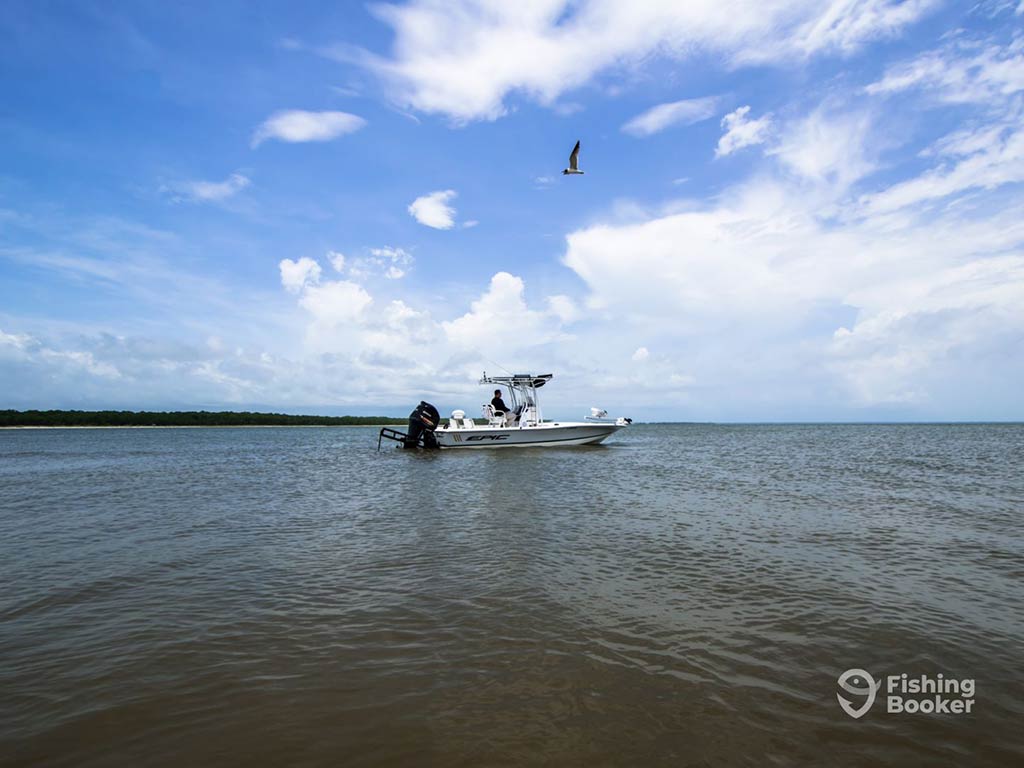
Charter fishing in Cape San Blas is an all-inclusive package for anyone visiting the area. From beginners to seasoned pros, everyone can find an adventure tailored to their skill level. It doesn’t matter which spot you aim to explore, or which species you got your mind set on.
Fishing with a local guide isn’t only about getting all necessary tackle and gear ready on board, along with post-trip services like cleaning and filleting your catch. A knowledgeable crew can teach you all about the waters of Cape San Blas and take you to the local “honey holes” that only they know. It’s always a win-win!
Fishing in Cape San Blas: Pristine Waters Meet Trophy Fish
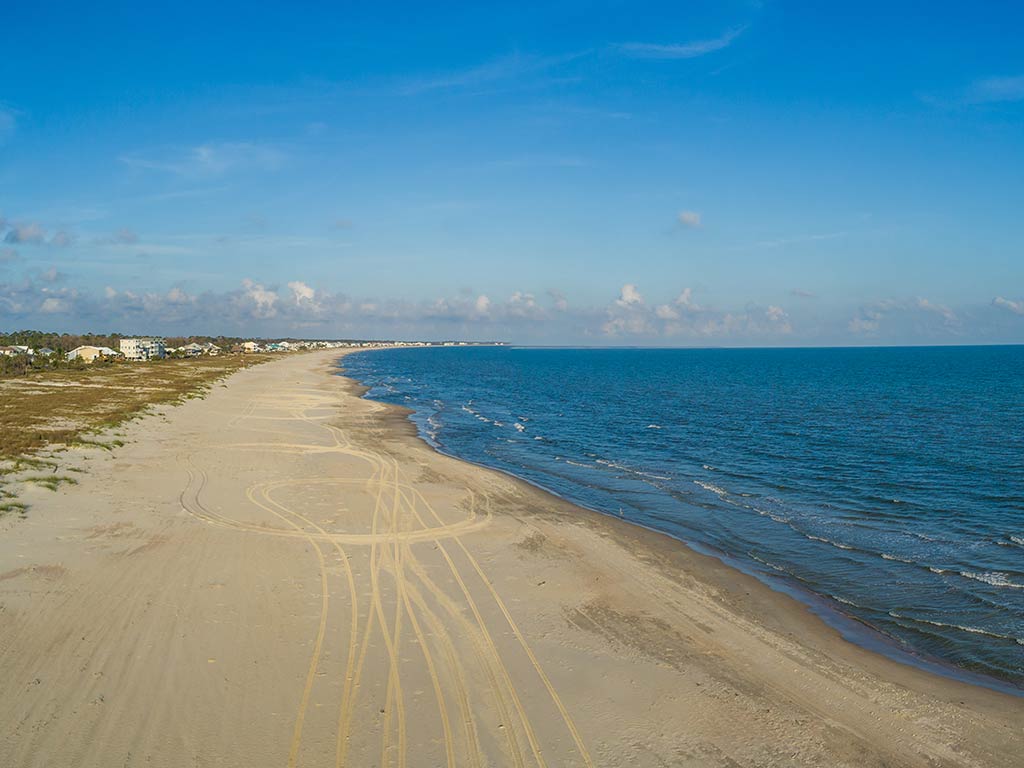
So there you have it. You’re ready to go. Whatever fishing in Cape San Blas is for you, chances are it’s a pretty great experience. It has everything needed for a perfect adventure – an abundance of game fish species in diverse aquatic habitats, along with breathtaking views. Whenever you decide to go, Cape San Blas will captivate your heart, and you’ll find yourself wishing to return, time and time again.
Have you ever been fishing in Cape San Blas? What is your most prized catch? Share your fish stories with us in the comments below!
The post Cape San Blas Fishing: The Complete Guide appeared first on FishingBooker Blog.
https://ift.tt/hBaNIGr
0 Comments
Enregistrer un commentaire